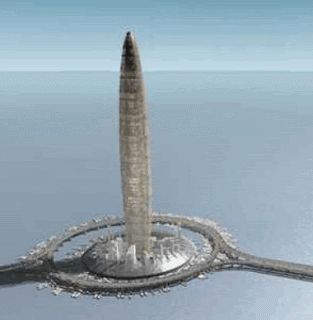The metamaterials are composites with extraordinary capabilities for bending electromagnetic waves. And they are on the way to make invisible an object or a person.
To make something invisible, it must have an invisibility shield - the material need to completely bend light waves around the object that we want to make invisible, like water from a river that flows around a rock.
In another class of applications, is also expected great progress. For optical microscopes can discern individual live virus or DNA molecules, the resolution of the microscope must be smaller than the wavelength of light.
The common thread among these metamaterials is negative refraction. Instead, all materials found in nature have a positive index of refraction. The refractive index is a measure of how much warp electromagnetic waves when passing from one medium to another.
In a classic illustration of how it behaves refraction, the shadow of a rod inserted in the water will seem as if it was crooked as we all know. If the water present negative refraction, the submerged part of the rod would appear instead as a crooked outward, or protruding from the surface of the water. Or, to take another example, a fish that swim under water appear to be swimming in the air above the water surface.
Some research teams have already developed metamaterials that operate at optical frequencies, but these materials in 2-D have been limited to a single monolayer artificial atoms whose properties to bend light can not be defined. Metamaterials of increased thickness in 3-D, with negative refraction, have only been achieved so far.
Among the achievements to date, two of the most recent and promising are those reached by two groups of scientists from the University of California at Berkeley, who designed for the first time in 3-D materials that can bend in the right way the natural direction of the light, a development that could help lay the groundwork for obtaining optical images of higher resolution, nanocircuitos for high-powered computers, and, to the delight of lovers of Science fiction and fantasy, as layers of invisibility devices that could make objects invisible to the human eye.
The progress in the development of metamaterials, composite materials with extraordinary capabilities for bending electromagnetic waves, continues to give surprises.
What have done the research teams responsible for the development of the two newest metamaterials is to take two very different approaches to the challenge of creating bulk metamaterials that can exhibit negative refraction at optical frequencies. Both are steps crucial to the development of practical applications for metamaterials.
Humans see the world through a narrow band of electromagnetic radiation known as visible light, with wavelengths ranging from 400 nanometers (violet light and purple), the 700 nanometers (red light dark). The wavelengths of infrared light are longer, measuring from about 750 nanometers to 1 millimeter.
To achieve negative refraction, the structural configuration of a metamaterial must be smaller than the wavelength of electromagnetic used. It is not surprising then that the initial results have not been achieved with visible light, but with microwaves, whose wavelengths, which can measure from 1 millimeter to 30 centimeters in length, is significantly higher than that of visible light.
In one of the two recent research, led by Xiang Zhang, professor of the Center for Science and Nano Engineering at the University of California at Berkeley, scientists pile up alternating layers of silver and magnesium fluoride and non-conductive layers conducted in a nano series of cuts, following a pattern similar to that of a fishing net, with the aim of creating a optical raw metamaterial. At wavelengths as short as 1500 nanometers, that is within the area closest to the infrared light in the visible electromagnetic spectrum, the researchers measured a negative index of refraction.
Each pair of conductive and non-conductive layers form a circuit. By stacking alternate layers is achieved by creating a number of circuits that respond so together and in opposition to the magnetic field of the incoming light.
This material, and also the other, achieve negative refraction minimizing the amount of energy that is absorbed or "lost" when light passes through them. In the case of the material, which has a structure in the form of "fishing net", nanocircuitos heavily intertwined allow light to pass through the material and spend less energy to move through the layers of metal.
Natural materials do not respond to the magnetic field of light, but this new metamaterial does. It is the first material that can be manufactured in bulk and that it can be said is that optical magnetism. Thanks to its unique characteristics, electrical and magnetic fields in the wavelength of light are move back into the material. The metamaterial developed by another working group uses a different principle to achieve the goal of doubling the light back. It is composed of silver nanowires formed inside the porous aluminum oxide. And its size is more than 10 times than the wavelength of visible light.
The creators of this material observed negative refraction in the wavelength of red light in lengths as short as 660 nanometers. It is the first demonstration of half voluminous that turns so visible light. The geometry of the vertical nanowires, which were placed equidistant and parallel to each other, was designed to respond only to the electric field in the light waves. The magnetic field present, which oscillates at an angle perpendicular to the electric field at a wavelength of light, is essentially blind to the vertical nanowires, a feature that significantly reduces energy loss.
The innovation of this material is nanowires that uses a new way to bend the light back without achieving, technically speaking, a negative index of refraction.
The benefits of having a real negative index of refraction, as achieved by the metamaterial as a fishing net, is that it can greatly improve the functioning of the antenna, to reduce interference. The materials with negative refractive indices can also reverse the Doppler effect, the phenomenon used in radars of the traffic police used to monitor the speed of passing vehicles. This means that the Doppler frequency waves reduces instead of increasing as we approach the vehicle.
But in most of the suggested applications for metamaterials, such as nano-optical imaging or the manufacture of invisibility devices, both the metamaterial-based nanowires as the structurally similar to a fishing net, can provide a good service.



































